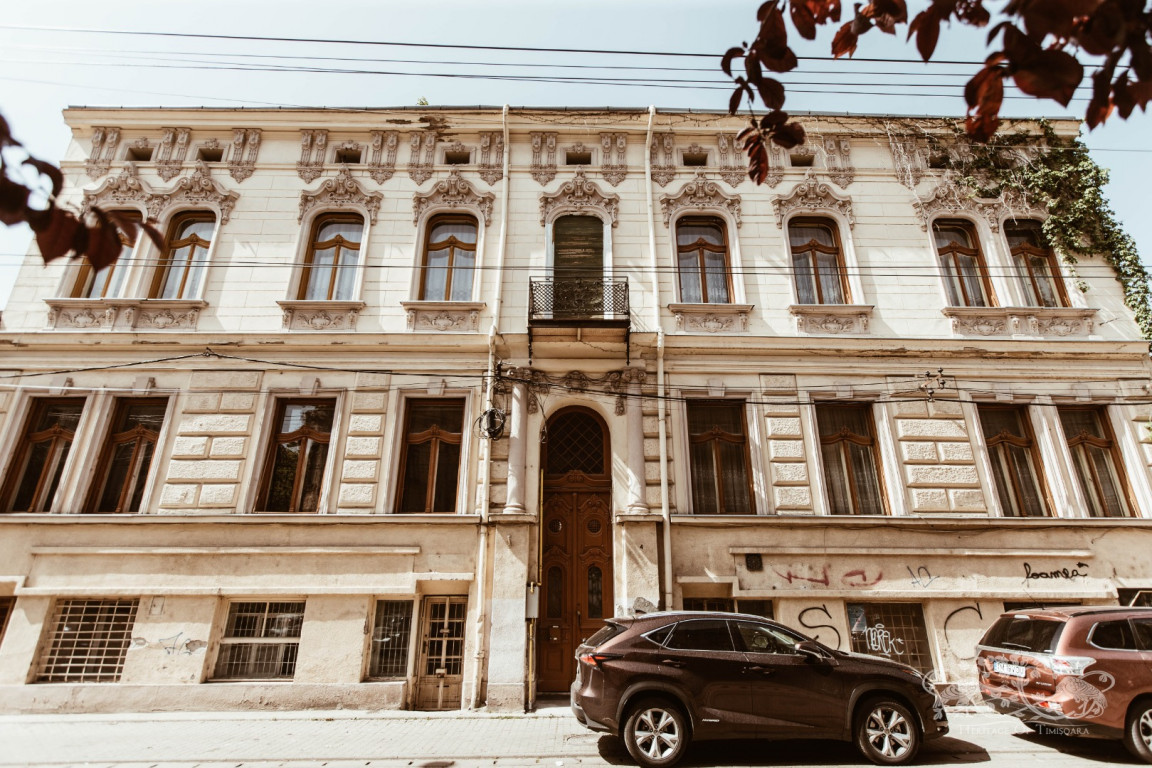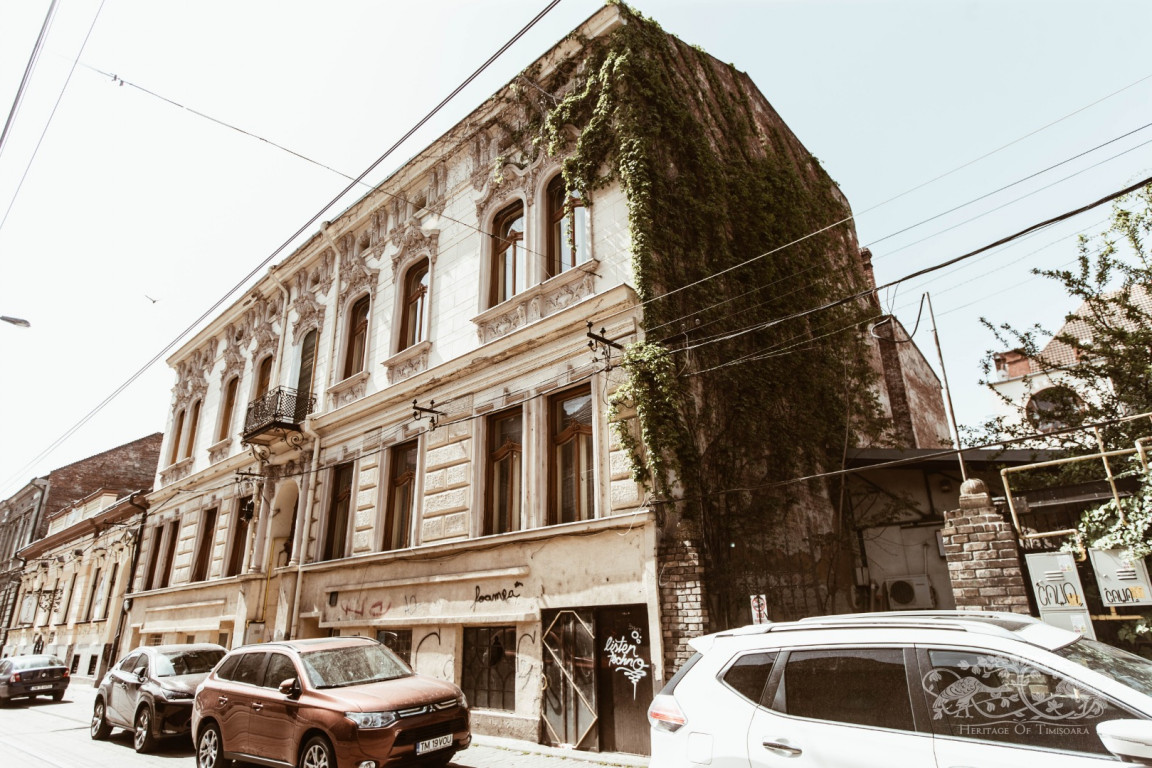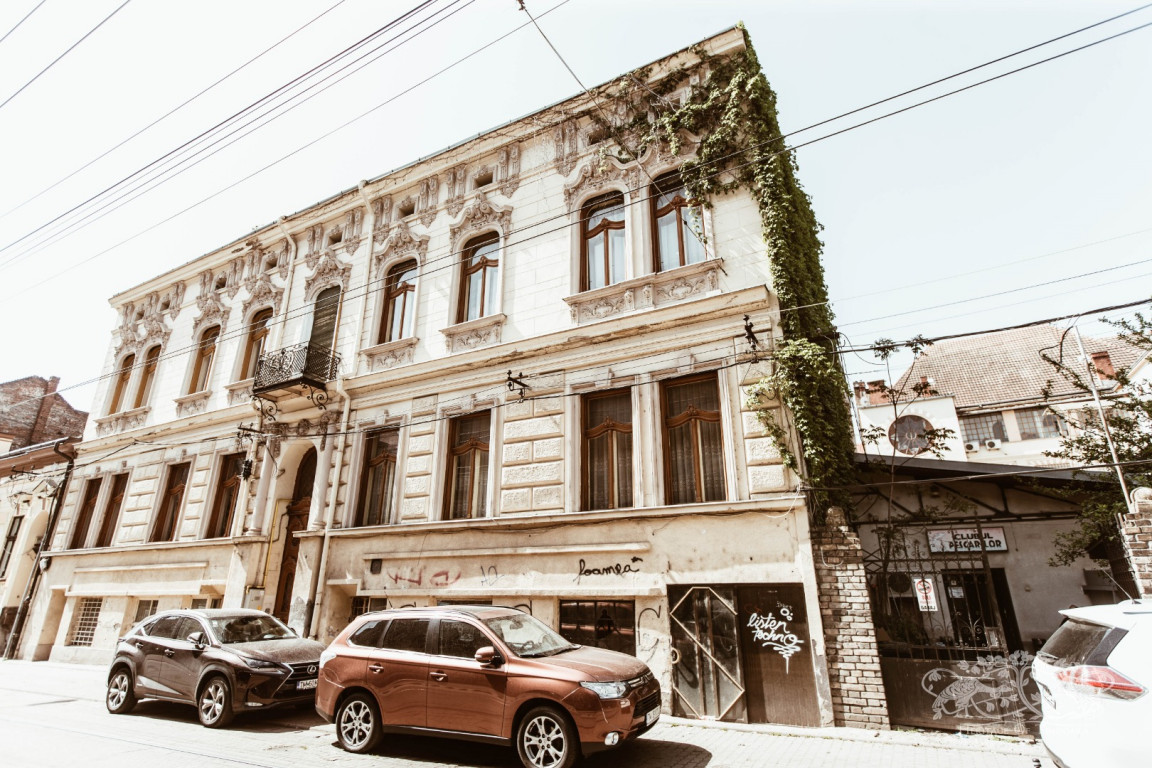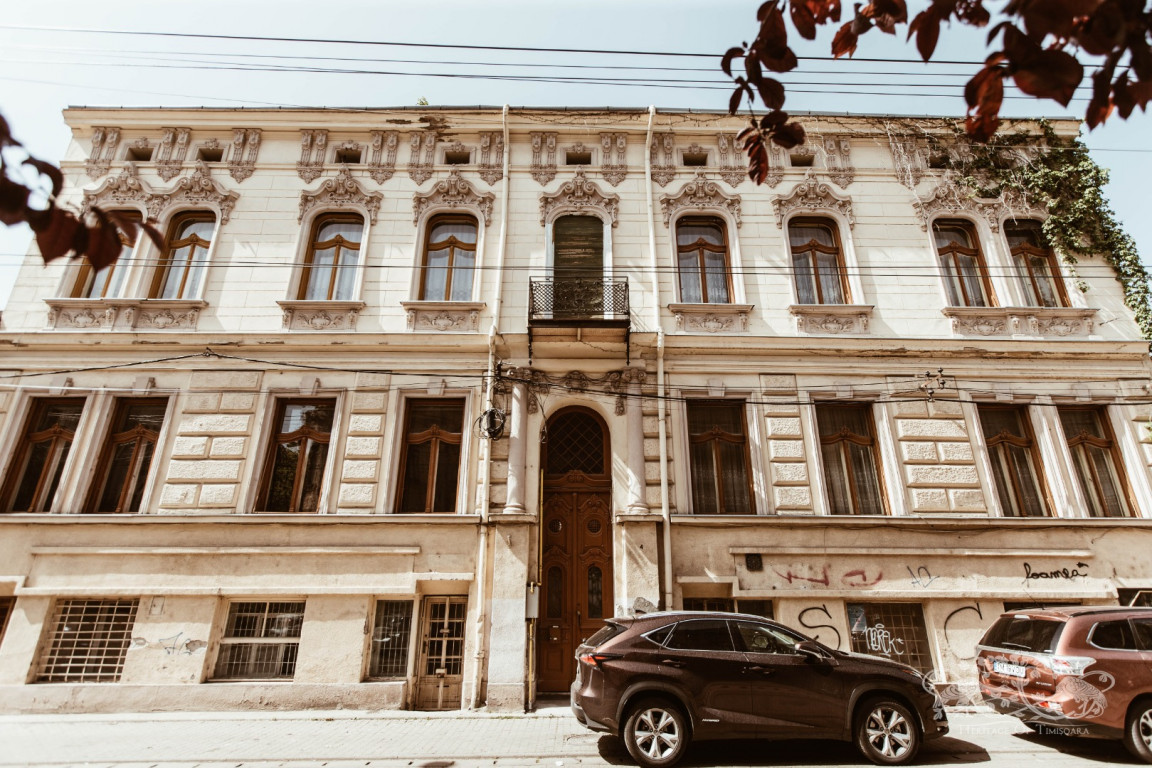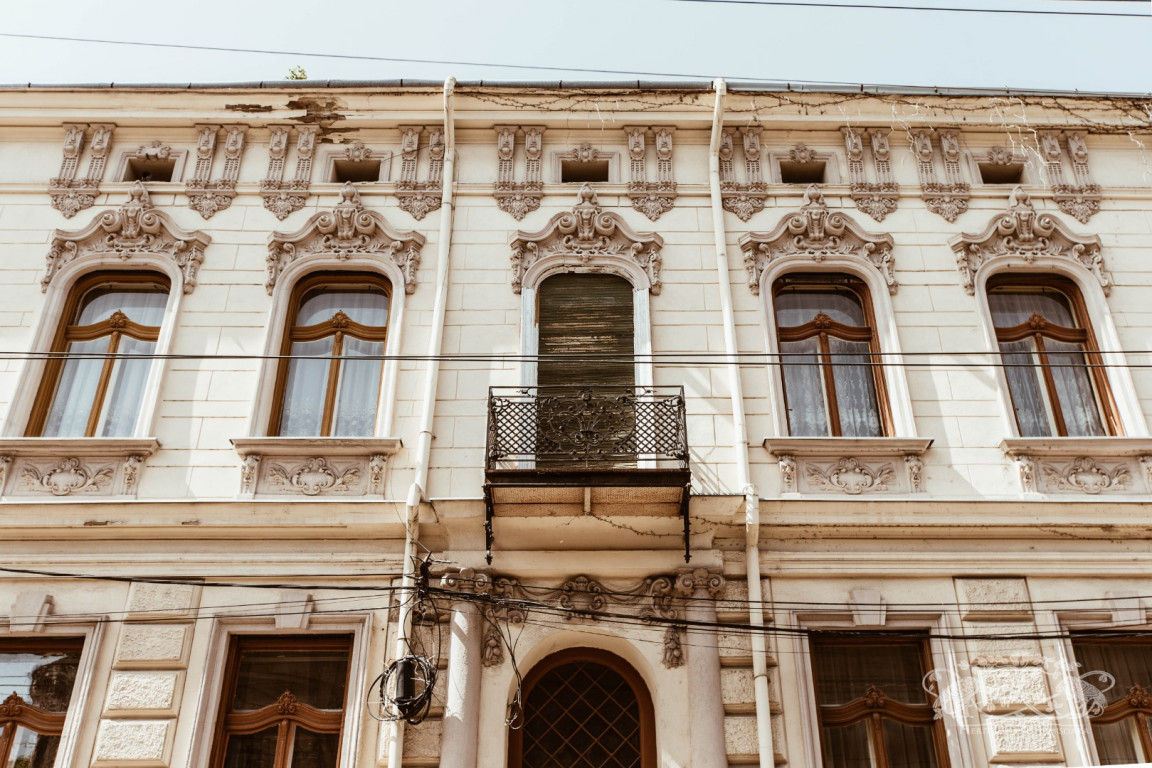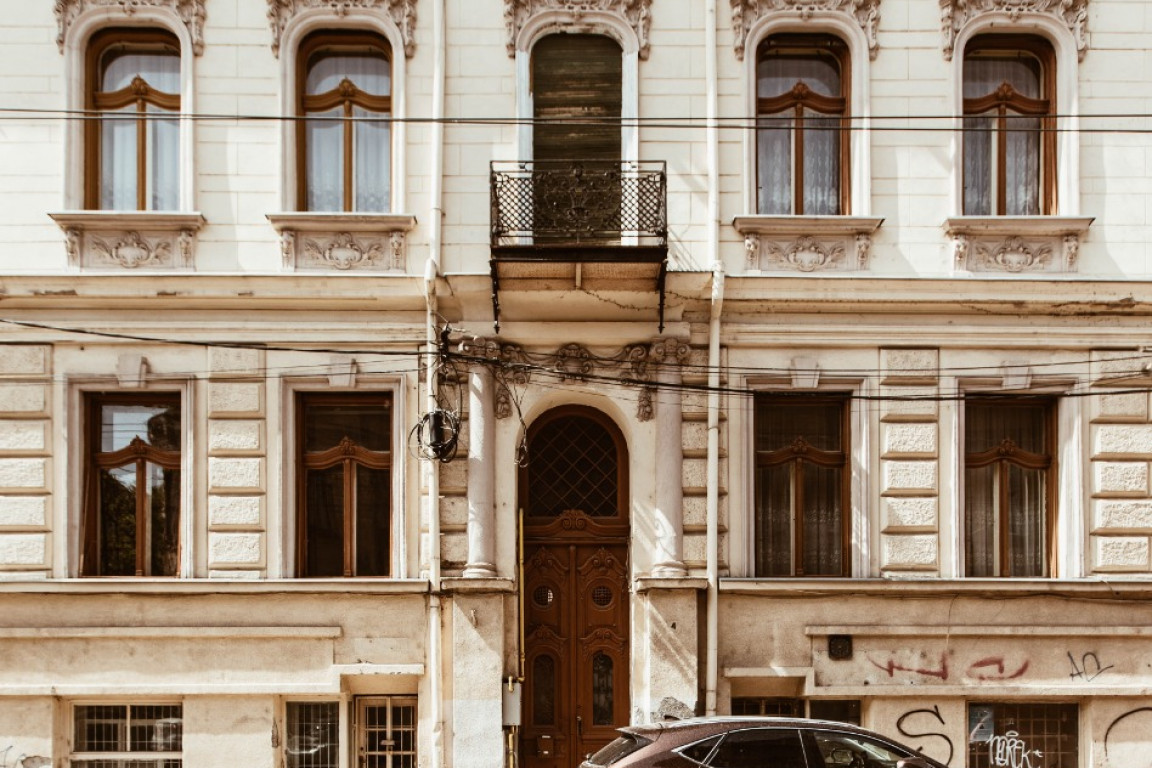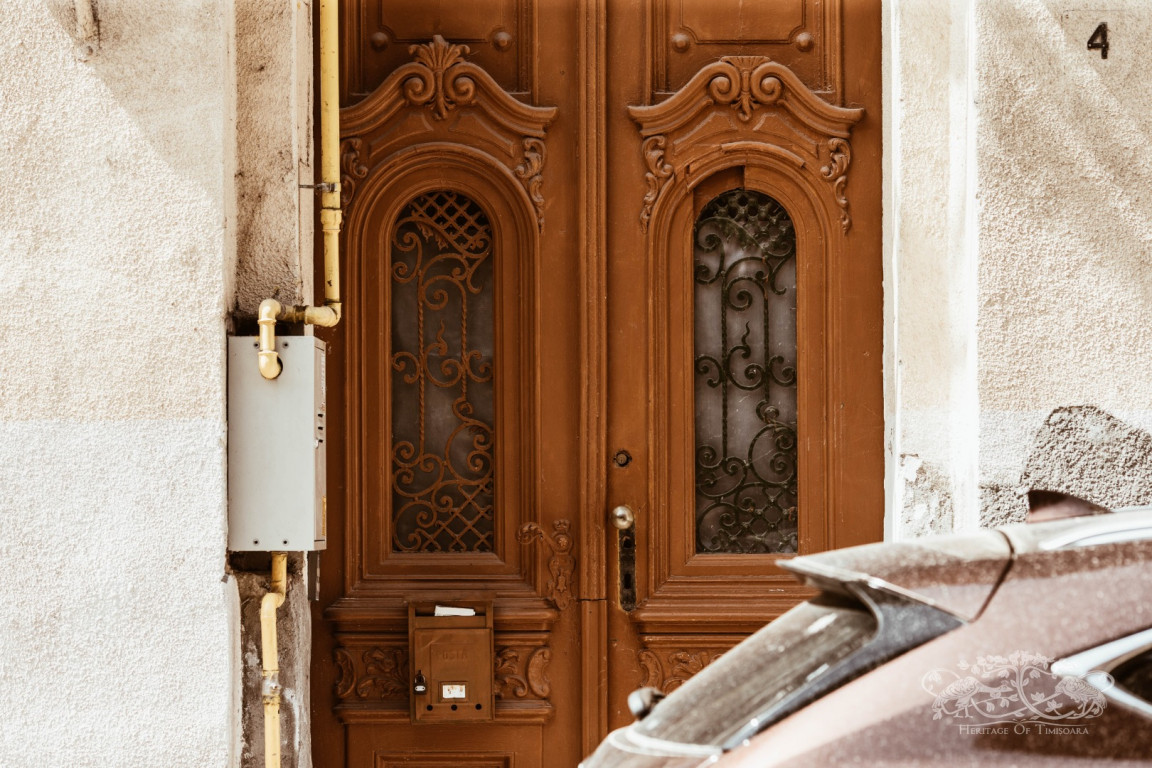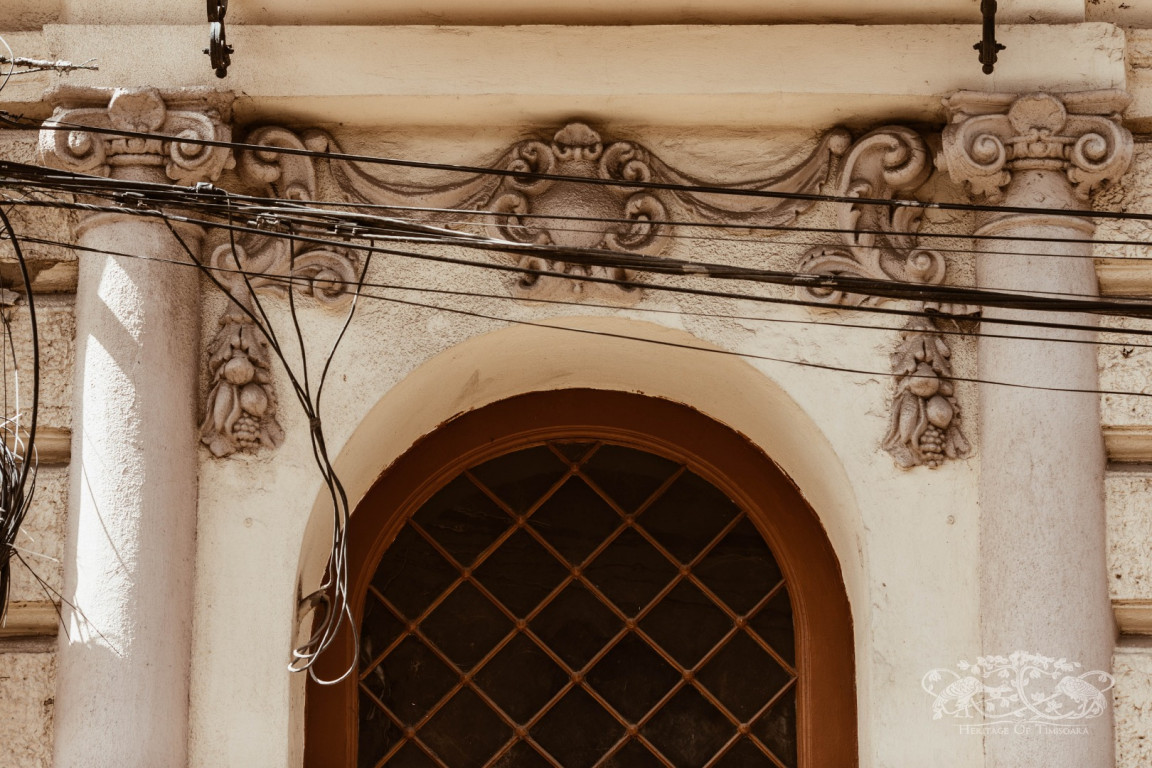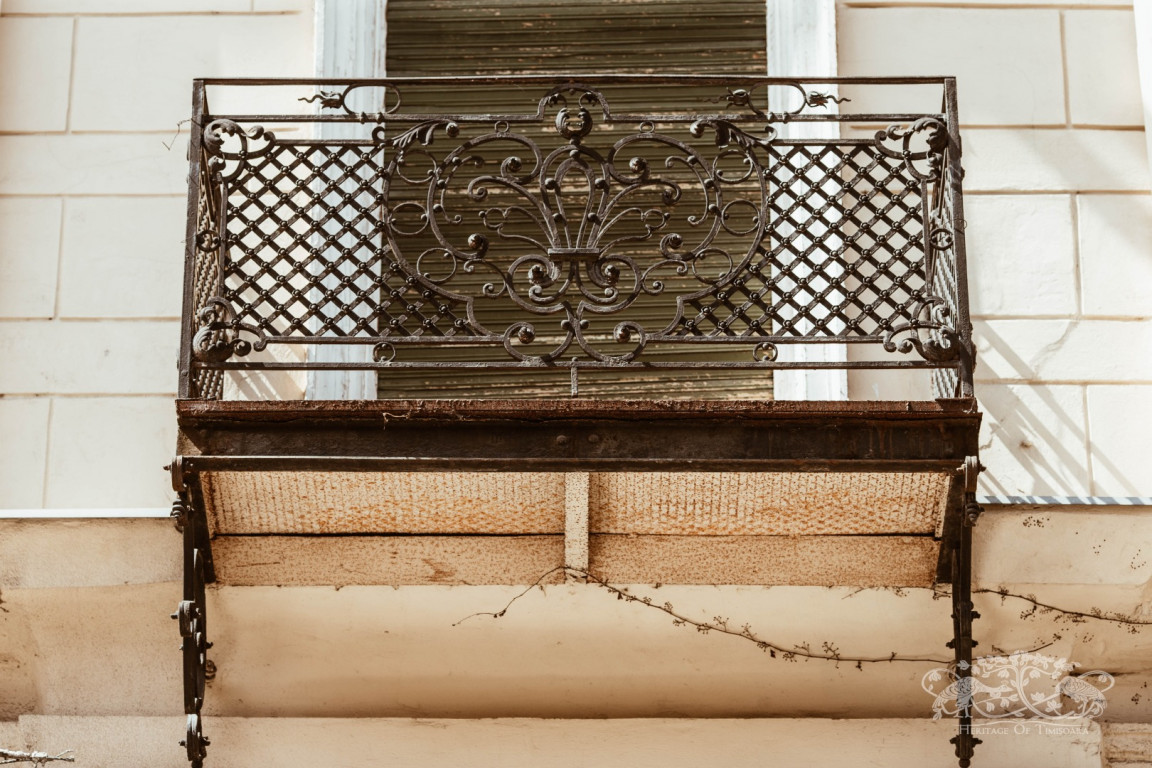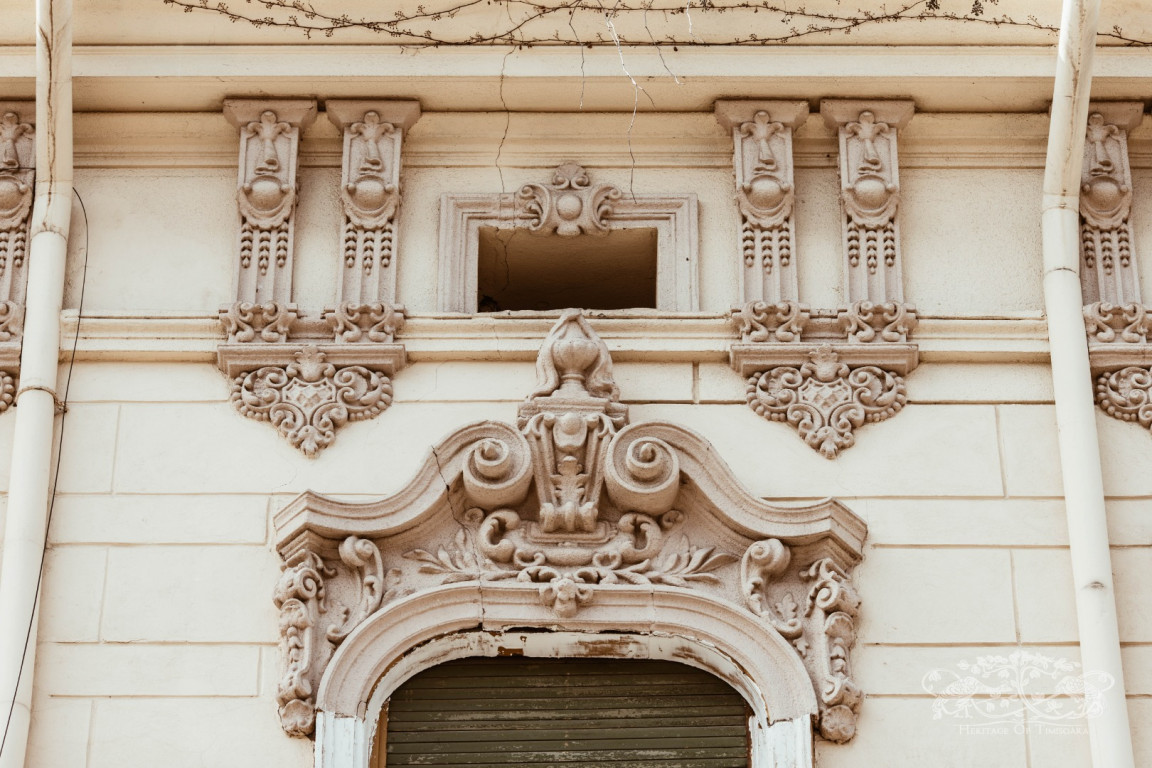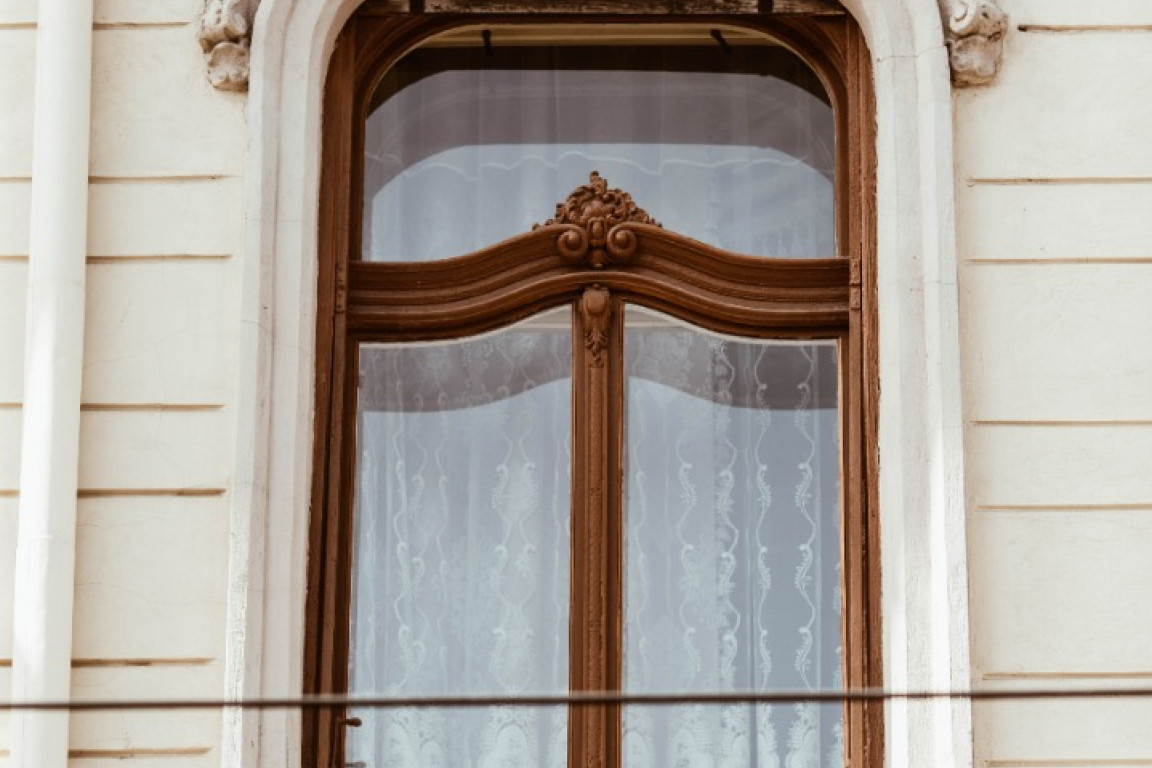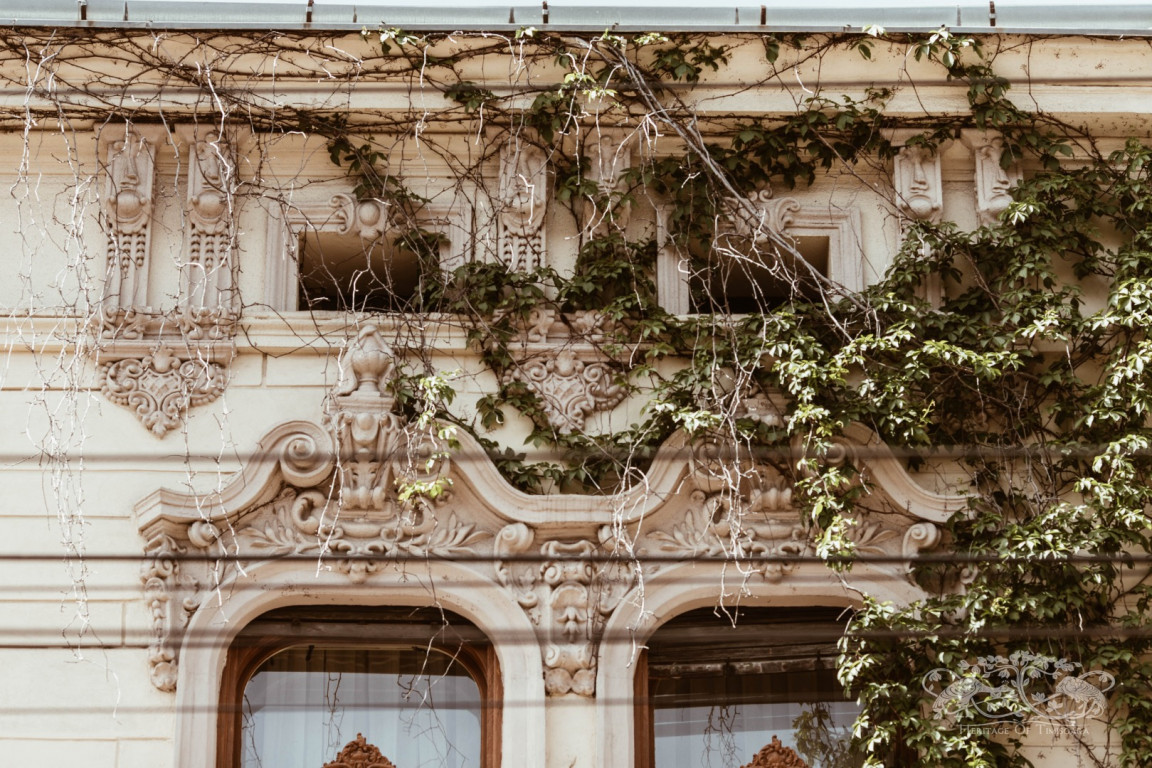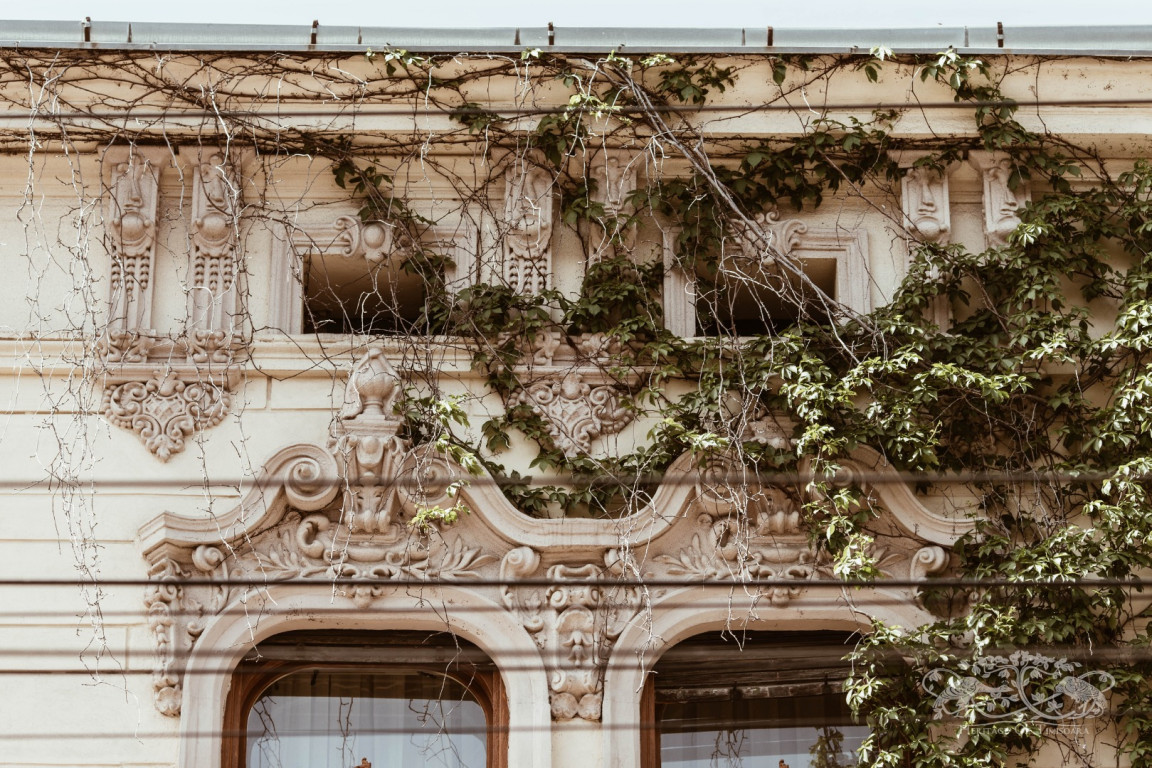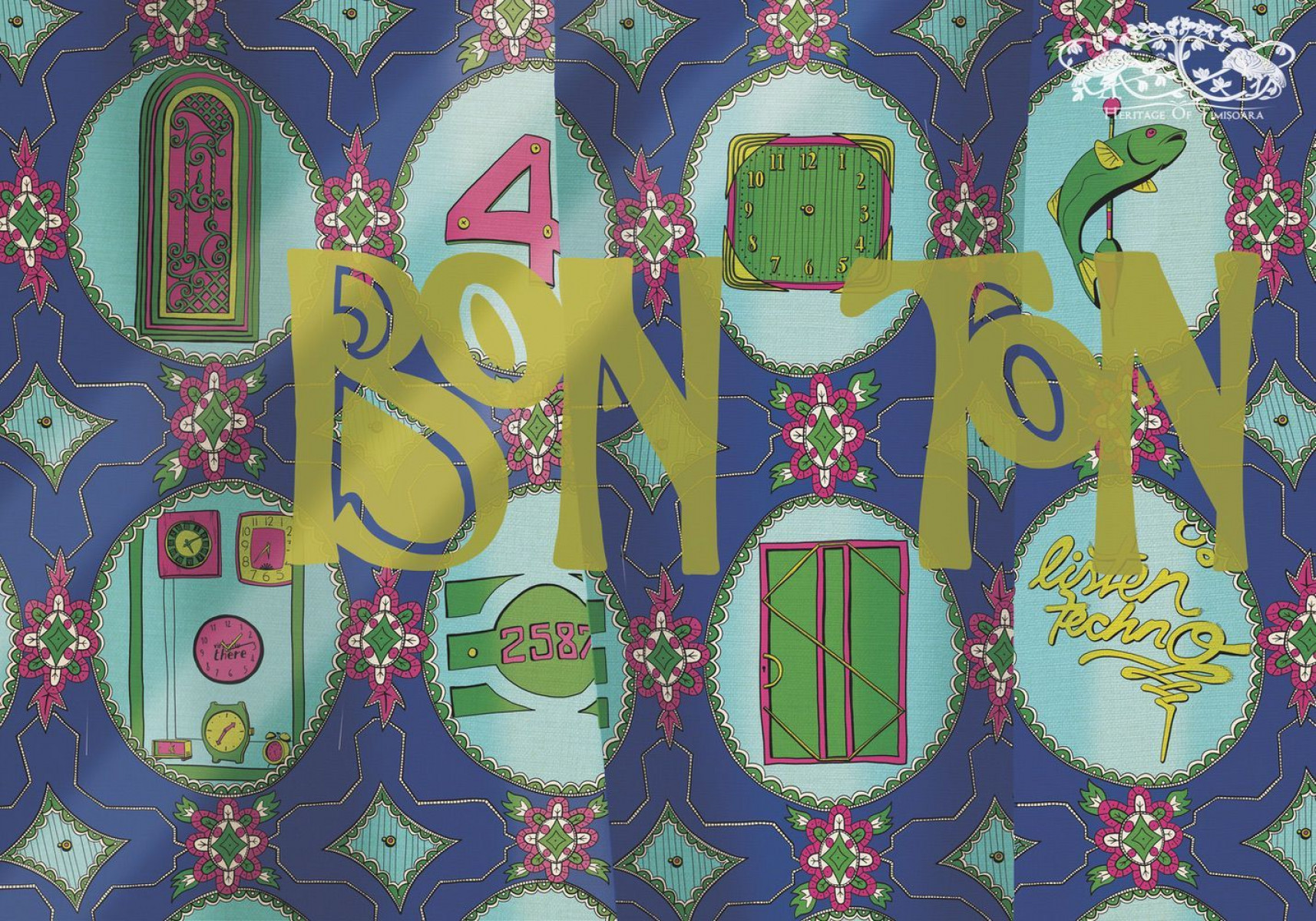After the interdiction to build in the non-aedificandi area of Timișoara is lifted at the end of the 19th century, the Town Hall created new plots in the space between the city’s historical neighbourhoods and the old fortification. This is how the plots between the streets Hunyady (today 16 December 1989 Boulevard), Gheorghe Doja, Posta (today Treboniu Laurian) and Batthyányi (today Timotei Cipariu) came to be.
The plot designated with the letter “E”, having a surface of 175 acres is bought in 1898 by Mór Káldori for 3,150 crowns. Two years later, in March, Marczell Káldori (most likely, Mór’s son - but this hypothesis requires further research) obtains a construction permit for a one storey house.
Marczell Káldori opted for a building in the historicist style, with Neo-Baroque decorations. The house has a semi-basement, a ground floor and a first floor, and it surprises the on-looker through the different ornamentation of the three levels. The semi-basement is treated as a pedestal for the rest of the building and is devoid of decoration (it was possibly lost in time). The ground floor is marked by a pattern imitating stone blocks and simple window surrounds, and is separated from the first floor by an intermediary cornice. The first floor is an explosion of Neo-Baroque decorations, of which the window surrounds and richly decorated pediment under the cornice are particularly worth mentioning. The access into the building, marked by two columns of Ionic inspiration, is exaggeratedly high for its width.
If, for his own house in Elisabetin neighbourhood Marczell Káldori opted for a conservative building in Historicist style (typical of the 19th century), 6 years later, he erected in Cetate (the fortified centre) an imposing apartment building in the style of the 1900s, in Jugendstil, with a plastic inspired by the medieval architecture of the German space, with Fachwerk elements.
Marczell Káldori was a merchant associated in several enterprises from the beginning of the 20th century in Banat, among which are Temesvárer Handels Corporation, Banater Kunstmühle Corporation or his own commercial business “Káldori Marczell”, which he set up in 1909.
In the issue from 27 June 1915 of the newspaper “Az ujság” from Budapest, we learn about an incident involving Marczell Káldori that is at the same time tragic and comic. According to the newspaper, Káldori was sentenced to 8 months in jail and a fine of 1.000 crowns for supplying the Austro-Hungarian armies fighting in the First World War with salami that had gone bad. The Heritage of Timișoara is yet to find out whether the sentence was actually carried out by the entrepreneur.
The Marczell Káldori House was made into an illustration as part of the project Heritage of Timișoara: Elisabetin. The artist, Amandine Bănescu, joggled the elements on the facade - architectural ornaments and advertising signs - to create a collage that mixes historical image with everyday reality.
